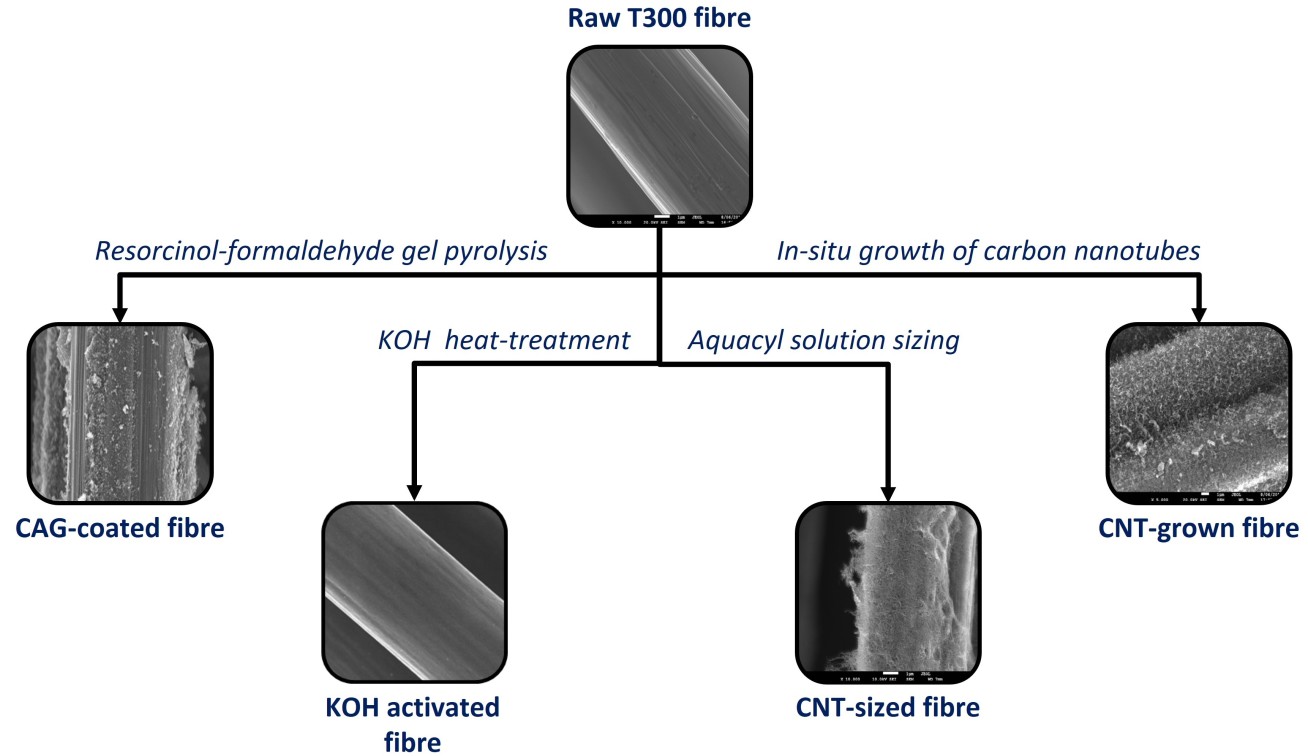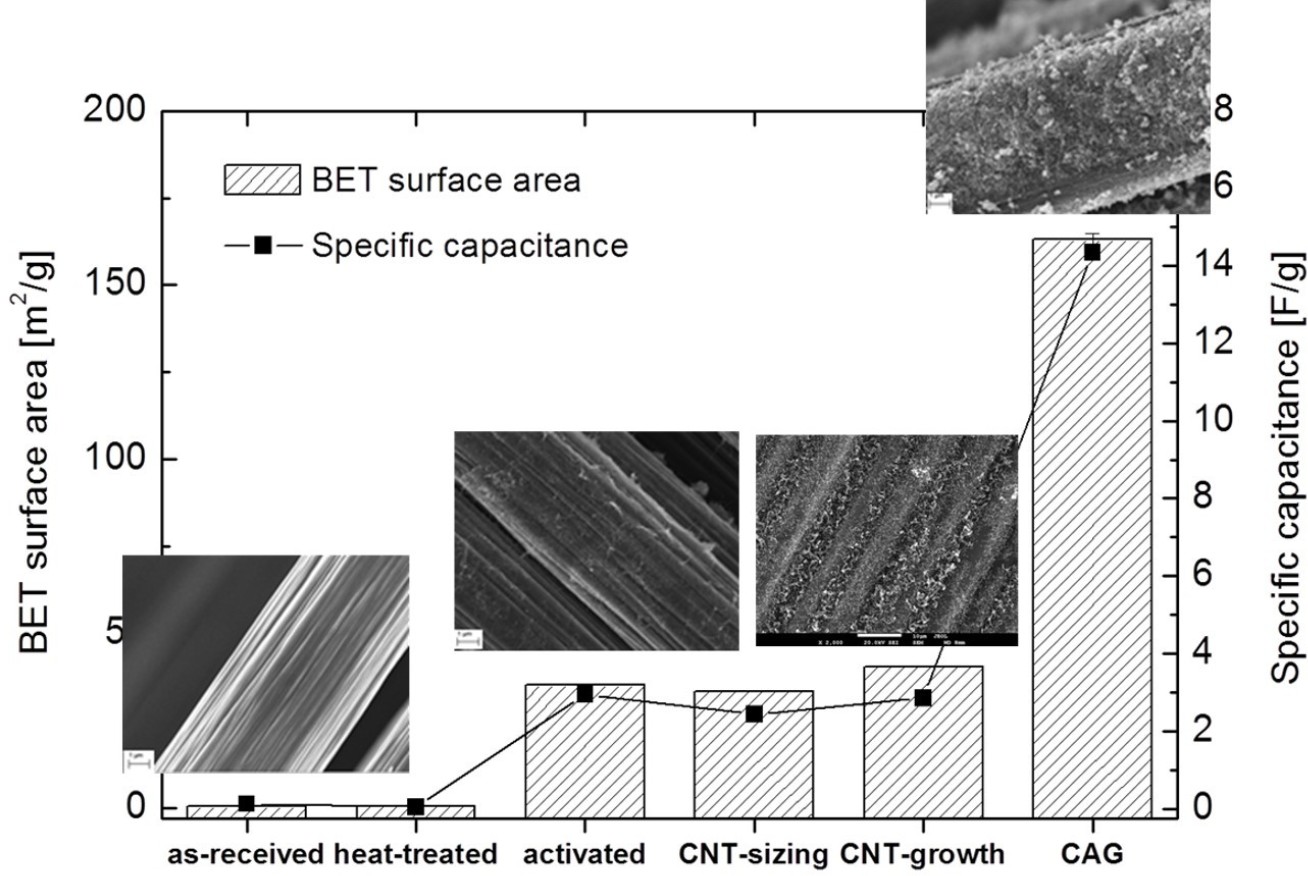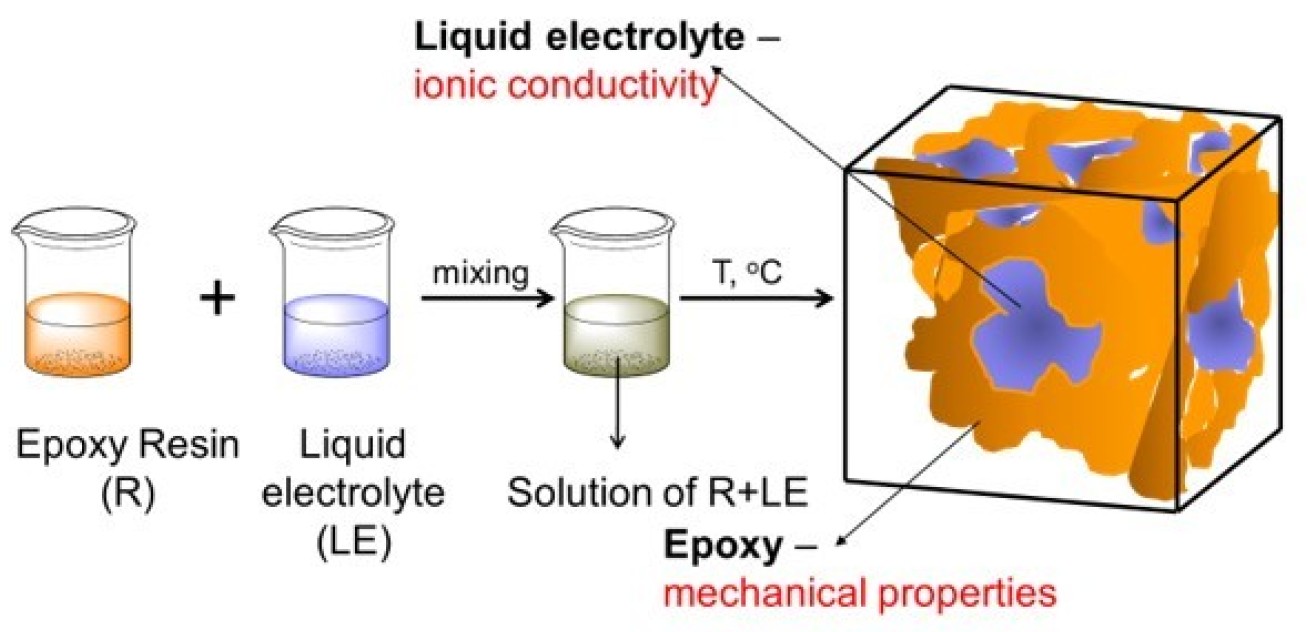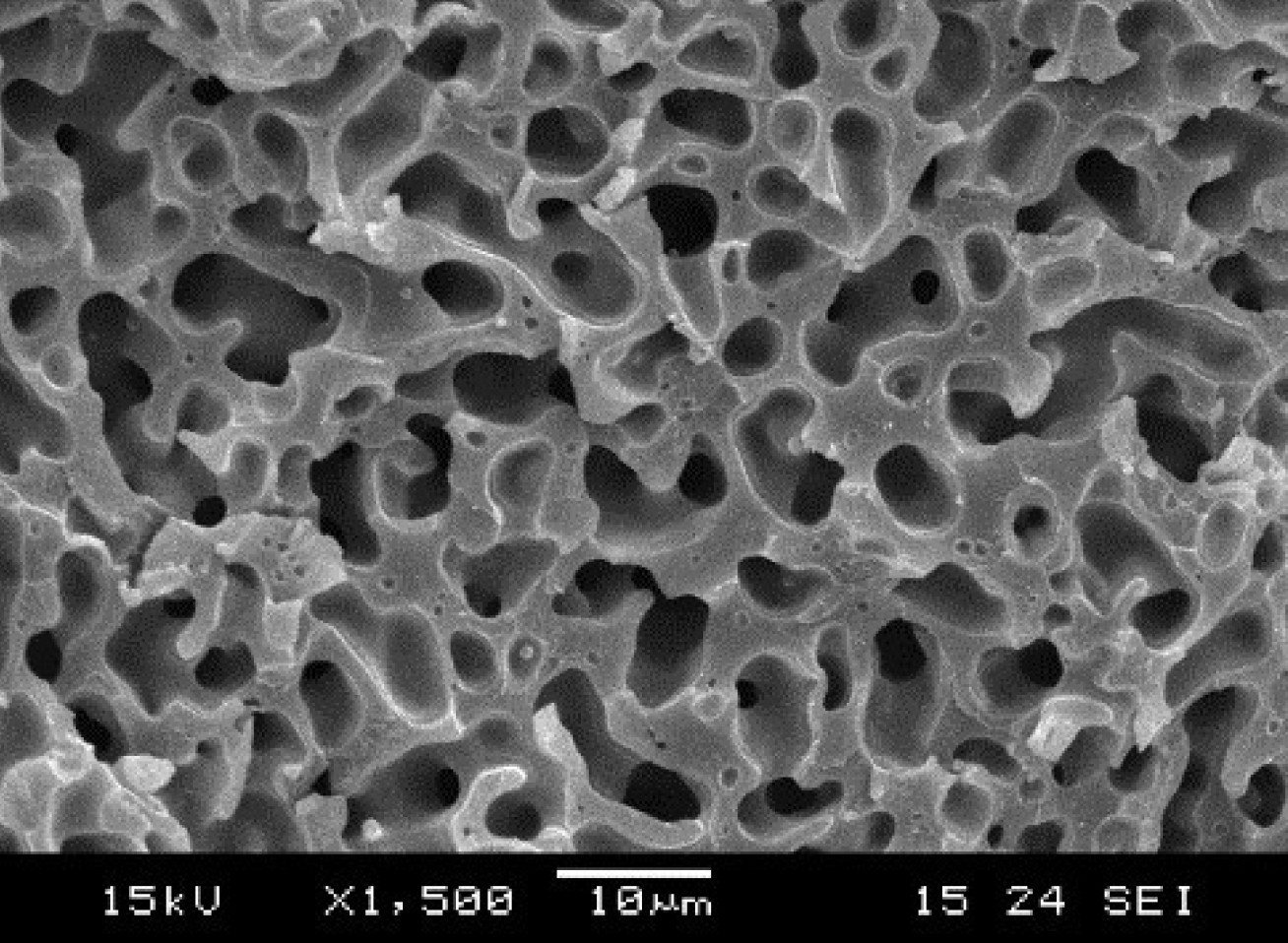
We have developed materials that act as both the electrodes and reinforcements in structural supercapacitor composites using various routes (Figure 1) which greatly improve the surface area of the material such that large amounts of electrical charge can be stored. The starting material consists of electrically-conducting carbon fibres woven into a fabric which has high stiffness and strength. More recently, fibres which have been spread to produce thin ply laminates have been used to reduce the distances that charges need to travel and achieve high power density.

The routes to achieving high surface areas have included potassium hydroxide activation, sizing and growing carbon nanotubes (CNTs) onto the surfaces of the carbon fibres and modification using carbon aerogel (CAG). The carbon aerogel modification resulted in the highest specific surface area and hence specific capacitance (Figure 2). Carbon aerogel is a hierarchical nanoporous material which forms around the carbon fibres and can support the fibres thus enhancing the mechanical properties.

To act as the composite matrix and provide ionic pathways for charge transfer between the electrodes, a range of structural electrolytes (or multifunctional matrices) have been developed by combining conventional structural epoxy resins with ionic liquid electrolytes (Figure 3).

This mixture forms a bicontinuous dual-phase microstructure upon curing (Figure 4) which can be tailored by adjusting the relative quantities of the structural and electrolyte phases. This structural electrolyte can be introduced around the carbon fibres using typical composite manufacturing routes, such as vacuum-assisted resin infusion and prepregging processes.
The current aim of the structural electrolyte development is to simultaneously achieve a Young's modulus > 1 GPa and an ionic conductivity > 1 mS/cm. It is also important to achieve such properties and the desired microstructure when the carbon fibres are introduced to the structural electrolyte; this aim is particularly challenging and requires further research to achieve good control of the microstructure throughout a structural power composite.
Related links
Contact
Professor Emile S Greenhalgh
Department of Aeronautics
Imperial College London
South Kensington Campus
London SW7 2AZ
+44 (0)7958 210 089
e.greenhalgh@imperial.ac.uk